2017-04-13 - Nº 102
Editorial
Esta é a Newsletter Nº 102 que se apresenta com o mesmo formato que as anteriores. Se gostar da Newsletter partilhe-a!
Todas as Newsletters encontram-se indexadas no link.
Esta Newsletter tem os seguintes tópicos:
Esta semana ficámos a saber que a NASA verificou que existe possibilidade dos planetas que orbitam sistemas com duas estrelas são excelentes candidatos a serem habitáveis. Ficámos igualmente a saber que no próximo dia 19 deste mês um asteróide irá passar a distância de 1.8 milhões de quilómetros da Terra. O asteróide, designado por 2014 JO25 foi descoberto em maio de 2014 por astrónomos no Catalina Sky Survey. O asteróide tem cerca de 650 metros de tamanho. O sistema de inteligência artificial AlphaGo irá disputar uma partida de Go contra o campeão chinês Ke Jie.
Na Newsletter desta semana apresentamos diversos projetos de maker assim como alguns modelos 3D que poderão ser úteis. É apresentada também a revista newselectronics de 11 de Abril.
 João Alves ([email protected])
João Alves ([email protected])
O conteúdo da Newsletter encontra-se sob a licença  Creative Commons Attribution-NonCommercial-ShareAlike 4.0 International License.
Creative Commons Attribution-NonCommercial-ShareAlike 4.0 International License.
Novidades da Semana

Earth-Sized 'Tatooine' Planets Could Be Habitable
"With two suns in its sky, Luke Skywalker's home planet Tatooine in "Star Wars" looks like a parched, sandy desert world. In real life, thanks to observatories such as NASA's Kepler space telescope, we know that two-star systems can indeed support planets, although planets discovered so far around double-star systems are large and gaseous. Scientists wondered: If an Earth-size planet were orbiting two suns, could it support life? It turns out, such a planet could be quite hospitable if located at the right distance from its two stars, and wouldn't necessarily even have deserts. In a particular range of distances from two sun-like host stars, a planet covered in water would remain habitable and retain its water for a long time, according to a new study in the journal Nature Communications." [...]

Asteroid to Fly Safely Past Earth on April 19
"A relatively large near-Earth asteroid discovered nearly three years ago will fly safely past Earth on April 19 at a distance of about 1.1 million miles (1.8 million kilometers), or about 4.6 times the distance from Earth to the moon. Although there is no possibility for the asteroid to collide with our planet, this will be a very close approach for an asteroid of this size. The asteroid, known as 2014 JO25, was discovered in May 2014 by astronomers at the Catalina Sky Survey near Tucson, Arizona -- a project of NASA's NEO Observations Program in collaboration with the University of Arizona. (An NEO is a near-Earth object). Contemporary measurements by NASA's NEOWISE mission indicate that the asteroid is roughly 2,000 feet (650 meters) in size, and that its surface is about twice as reflective as that of the moon. At this time very little else is known about the object’s physical properties, even though its trajectory is well known. The asteroid will approach Earth from the direction of the sun and will become visible in the night sky after April 19. It is predicted to brighten to about magnitude 11, when it could be visible in small optical telescopes for one or two nights before it fades as the distance from Earth rapidly increases. Small asteroids pass within this distance of Earth several times each week, but this upcoming close approach is the closest by any known asteroid of this size, or larger, since asteroid Toutatis, a 3.1-mile (five-kilometer) asteroid, which approached within about four lunar distances in September 2004. The next known encounter of an asteroid of comparable size will occur in 2027 when the half-mile-wide (800-meter-wide) asteroid 1999 AN10 will fly by at one lunar distance, about 236,000 miles (380,000 kilometers)." [...]
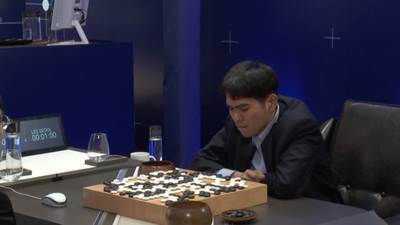
A.I. player AlphaGo to play Chinese Go champion
"DeepMind’s AlphaGo program will test its artificial intelligence capabilities in May against top Go player Ke Jie. The match of three games in Wuzhen, China, between AlphaGo and the Chinese player comes about a year after the computer program beat by 4-1 a key player, the South Korean Lee Se-dol, in a game that is regarded as involving more complex strategy than chess. During the game, players take turns placing black or white pieces, called “stones,” on the 19-by-19 line grid. The aim is to capture the opponent's stones by surrounding them and encircling more empty space as territory. AlphaGo has been seen as a major contender because of its ability to learn from its experience, sometimes resulting in far-from-human but nevertheless successful moves." [...]
Outras Notícias
- This tiny electric jet startup thinks it can reinvent regional air travel
- Open sourcing Sonnet - a new library for constructing neural networks
- Orange Pi 2G-IoT Cellular Mini PC Unveiled For $10
- Microsemi and Athena Announce the TeraFire Hard Cryptographic Microprocessor for PolarFire "S Class" FPGAs, Providing Advanced Security Features
- Sony Commercializes the Industry's First*1 High-Sensitivity CMOS Image Sensor for Automotive Cameras, Delivering Simultaneous LED Flicker Mitigation and High-Quality HDR Shooting
- NASA Astronaut to Star in First Ultra-High-Definition Live Stream from Space
- Printed titanium parts expected to save millions in Boeing Dreamliner costs
- Adidas’ latest 3D-printed shoe puts mass production within sight
- NASA Missions Provide New Insights into 'Ocean Worlds' in Our Solar System
- Belgian company takes 3D printing to chocolate
Ciência e Tecnologia

Quantum Computing Now Has a Powerful Search Tool
"Back in 1996, a computer scientist called Lov Grover at Bell Labs in New Jersey unveiled an unusual algorithm for searching through a database. Searching algorithms are among the most important in computer science. They make possible mundane tasks such as hunting through phones books but also more exotic tasks such as breaking cryptographic codes. This kind of algorithm is ubiquitous in computer science. So any way of speeding up the task is hugely significant. A standard search takes a period of time that is roughly proportional to the number of elements in the search. That’s because, in the worst-case scenario, the algorithm has to search through all the elements to find just one. But Grover’s algorithm is different. The time it takes is proportional to the square root of the number of elements. Computer scientists call this a quadratic speed-up. And in a world where speed increases of a few fractions of a percent are hugely valuable, a quadratic speed-up is a towering achievement." [...]

Information storage with a nanoscale twist
"Swirling objects known as magnetic vortices and skyrmions can be miniaturized without sacrificing mobility, a KAUST-led international research team has found. These findings are relevant for future “race-track” memory technologies that feature massive densities of moveable magnetic bits. In nanometer-thin magnetic films, such as iron-nickel alloys, the region separating two magnetic domains or defects can adopt tiny whirlpool-like patterns. Some of these patterns, called skyrmions, resist unraveling even when packed tightly together, and they can also be directed with small electric currents. These features have made the skyrmions attractive targets for research into high-capacity memory devices. One concept zips skyrmions around a loop then past a stationary read/write head to eliminate the need for mechanical components used in today’s hard drives. Aurelien Manchon, an Associate Professor of Material Science and Engineering at the University, notes that one of the main reasons for the appeal of skyrmions is their ability to avoid defects or uneven patches in thin films that would normally trap or “pin” a magnetic charge. However, this agility is compromised when researchers try to shrink skyrmions to the smallest size possible—the smaller they get the more likely they are to get pinned because of the relative increase in defect site dimensions." [...]

Man moves paralyzed legs using device that stimulates spinal cord
" Mayo Clinic researchers used electrical stimulation on the spinal cord and intense physical therapy to help a man intentionally move his paralyzed legs, stand and make steplike motions for the first time in three years. The case, the result of collaboration with UCLA researchers, appears today in Mayo Clinic Proceedings. Researchers say these results offer further evidence that a combination of this technology and rehabilitation may help patients with spinal cord injuries regain control over previously paralyzed movements, such as steplike actions, balance control and standing." [...]

Carnegie Mellon AI Takes On Chinese Poker Players
"A version of Carnegie Mellon University's Libratus, which in January became the first artificial intelligence to defeat top poker pros at Heads-Up, No-Limit Texas Hold'em, will play six top Chinese players for a $290,000 winner-take-all purse. The 36,000-hand exhibition featuring a different AI, named Lengpudashi or "cold poker master," will take place April 6–10 on the island province of Hainan, China. The human players, called Team Dragons, will be led by Alan (Yue) Du, a Shanghai venture capitalist and amateur player who won the $5,000 Buy-In, No-Limit Hold'em category of the 2016 World Series of Poker." [...]

New study will explore future of transportation
"Energy demand for transportation—which today accounts for approximately one-fifth of the world’s energy consumption—is expected to rise substantially as a growing middle class in emerging economies demands greater access. But how will such demand be addressed in the years ahead? As part of MIT’s five-year Plan for Action on Climate Change, the MIT Energy Initiative (MITEI) has launched a major study—“Mobility of the Future”—to explore how consumers and markets will respond to potentially disruptive technologies, business models, and government policies. The scope of this study is ground transportation with an emphasis on the movement of people." [...]
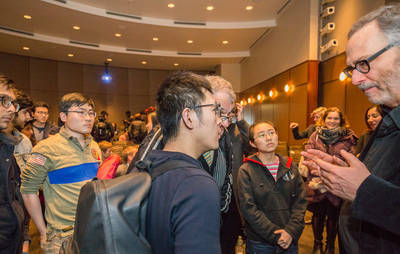
David E. Shaw's Supercomputer Is Uncovering Secrets of Human Biology
"David E. Shaw, the legendary quantitative investment manager turned innovator in computational biochemistry, spoke to a packed auditorium of Columbia Engineering students and described his research and development of high-speed simulations that could lead to better understanding of protein behavior and improvements in drug discovery for diseases like cancer and Alzheimer’s. Shaw was featured as part of the School’s “Engineering Icons” series, which brings leading experts who are having a major impact in different fields of engineering and the applied sciences to campus. Dean Mary C. Boyce introduced Shaw, referencing his time as a professor in Columbia’s Computer Science department in the 1980s before he became a forerunner in computational finance through his quantitative investment firm, D.E. Shaw Group. Since 2001, Shaw’s primary focus has been on efforts in molecular biology through D.E. Shaw Research (DESRES), where he is chief scientist. The evening began as a Q&A between Dean Boyce and Shaw, who also holds an appointment as senior research fellow at the Center for Computational Biology and Bioinformatics at Columbia University. Shaw showed several videos of high-speed molecular dynamics simulations performed by Anton, the specialized supercomputer built by his research group. Shaw noted that computer science has been a common thread guiding his multi-faceted career. A former teacher and mentor once counseled him to “stop trying to think of big ideas” and focus on the close study of a concrete application, since this often reveals fundamental problems whose solution leads naturally to new, big ideas." [...]

Quantum-physical Model System
"Two researchers at Heidelberg University have developed a model system that enables a better understanding of the processes in a quantum-physical experiment with ultracold atoms. Using computer-assisted methods, Prof. Dr Sandro Wimberger and David Fischer from the Institute for Theoretical Physics discovered physical laws that point to the universal properties of this system. Their results were published in the journal “Annalen der Physik”. Under certain conditions, small particles follow completely different physical laws than those we are accustomed to. “Observing such quantum-physical phenomena, however, is sometimes difficult and requires working with small and isolated systems and to investigate those. But perfect isolation from the environment is never possible, so external influences can easily destroy the fragile state of the quantum system,” explains primary author David Fischer, a student of physics at Heidelberg University. For experiments in this field, keeping such disruptions under control is of great interest. “This control enables us not only to ensure the coherence of the system, but it can also be used selectively to effect special conditions,” emphasises Prof. Wimberger." [...]

Scientists Watch a Molecule Protect Itself from Radiation Damage
"When the molecules that carry the genetic code in our cells are exposed to harm, they have defenses against potential breakage and mutations. For instance, when DNA is hit with ultraviolet light, it can lose excess energy from radiation by ejecting the core of a hydrogen atom — a single proton — to keep other chemical bonds in the system from breaking. To gain insight into this process, researchers used X-ray laser pulses from the Linac Coherent Light Source (LCLS) at the Department of Energy’s SLAC National Accelerator Laboratory to investigate how energy from light transforms a relatively simple molecule, 2-thiopyridone. This molecule undergoes a chemical transformation that also occurs in the building blocks of DNA. The scientists looked at this process by probing the nitrogen atom in the molecule with X-ray pulses that lasted just femtoseconds, or quadrillionths of a second. The results, published in Angewandte Chemie, are a step toward better understanding what’s called “excited state proton transfers” in DNA and other molecules." [...]

Lice-Hunting Underwater Drone Protects Salmon With Lasers
"The pens holding cold-water fish in the fjords of Norway and quiet lochs of Scotland, whose depths are normally inky black after dark, now have an eerie night glow. There’s a perfectly rational explanation: Thousands of laser pulses are doing an important job, lighting up fish stocks in the latest bid to control a pesky parasite that can injure or even kill farmed salmon, and devastate an industry estimated to reel in about US $10 billion annually. The problem is sea lice, marine ectoparasites. Two particular sea lice species, Lepeophtheirus salmonis and Caligus elongatus, attach to salmon and sea trout, feeding off their tissues, blood, and protective external mucus membranes. Though the lice find the flesh and blood of wild and farmed fish equally palatable, the problem is particularly acute in densely populated salmon farm pens, where the parasites’ food source are collected in a stationary place. Most pens typically keep 50,000 to 150,000 fish swimming inside a mesh perimeter. So, while the lice are a relatively harmless problem for fast and free-moving wild fish, the captive host in the pens find themselves unable to escape the louse onslaught." [...]
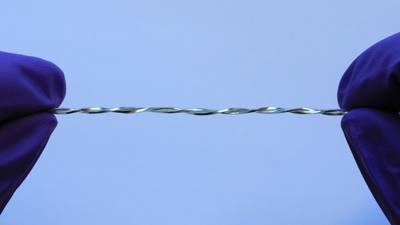
Touch-Sensitive, Elastic Fibers Offer New Interface for Electronics
"Researchers from North Carolina State University have created elastic, touch-sensitive fibers that can interface with electronic devices. “Touch is a common way to interact with electronics using keyboards and touch screens,” says Michael Dickey, a professor of chemical and biomolecular engineering at NC State and corresponding author of a paper describing the work. “We have created soft and stretchable fibers that can detect touch, as well as strain and twisting. These microscopic fibers may be useful for integrating electronics in new places, including wearable devices.” The new fibers are made of tube-like polymer strands that contain a liquid metal alloy, eutectic gallium and indium (EGaIn). The strands are only a few hundred microns in diameter, which is slightly thicker than a human hair." [...]

Algorithm and rhyme
"Rodgers and Hammerstein. John and Taupin. ALYSIA and MABLE? Perhaps you haven’t heard of those last two yet but, thanks to the work of a local computer scientist and her team, musicians of the near future may be utilizing artificial-intelligence systems like them to help the creative process along. Dr. Margareta Ackerman, an assistant professor at San Jose State University, will give a free, public lecture on her algorithmic songwriting systems at Stanford University’s Center for Computer Research in Music and Acoustics (CCRMA) on April 13. "I come from a background of being both a computer scientist and musician, and I had trouble composing," Ackerman said "When I discovered computational creativity -- the idea of a computer as a collaborator -- I came up with a system that could collaborate with me on writing melodies that I could then sing." That system is ALYSIA (Automated LYrical SongwrIting Application), which generates and suggests melodies based on human-provided lyrics. A second system she’s developing, MABLE -- "I like to give them girls’ names; they’re my daughters," Ackerman explained with a smile -- develops lyrics in collaboration with humans. (MABLE stands for MexicA’s BaLlad machinE, as it was originally used in conjunction with the storytelling system MEXICA, and is a joint project with Professor Rafael Pérez y Pérez of Mexico’s Universidad Autónoma Metropolitana and Ackerman’s student Divya Singh.)" [...]

Computers of the Future May Be Minuscule Molecular Machines
"Zeroes and 1s are so last century. The next computer revolution may rely not on a binary number system, but one that can store millions of pieces of information in the minuscule attributes of molecules, such as orientation, size and color. The Defense Advanced Research Projects Agency (DARPA), the branch of the U.S. Department of Defense charged with dreaming up futuristic new technologies for the military, is developing a new "Molecular Informatics" program to do exactly that. The long-term goal? Harness chemistry's natural variation to crank through massive amounts of data processing and storage, creating minuscule molecular machines." [...]
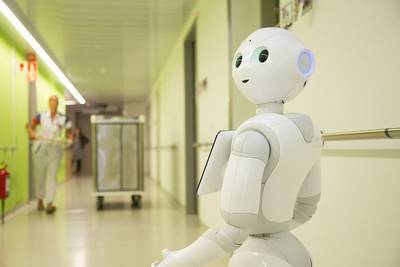
New computer vision challenge wants to teach robots to see in 3D
"Computer vision is ready for its next big test: seeing in 3D. The ImageNet Challenge, which has boosted the development of image-recognition algorithms, will be replaced by a new competition next year that aims to help robots see the world in all its depth. Since 2010, researchers have trained image recognition algorithms on the ImageNet database, a go-to set of more than 14 million images hand-labelled with information about the objects they depict. The algorithms learn to classify the objects in the photos into different categories, such as house, steak or Alsatian. Almost all computer vision systems are trained like this before being fine-tuned on a more specific set of images for different tasks. Every year, participants in the ImageNet Large Scale Visual Recognition Challenge try to code algorithms that can categorise these images with as few errors as possible. Seven years ago, this was a difficult task, but now computer vision is great at categorising images." [...]
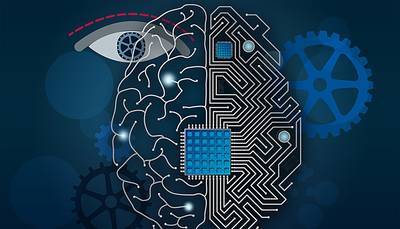
Electronic synapses that can learn : towards an artificial brain ?
"One of the goals of biomimetics is to take inspiration from the functioning of the brain in order to design increasingly intelligent machines. This principle is already at work in information technology, in the form of the algorithms used for completing certain tasks, such as image recognition; this, for instance, is what Facebook uses to identify photos. However, the procedure consumes a lot of energy. Vincent Garcia (Unité mixte de physique CNRS/Thales) and his colleagues have just taken a step forward in this area by creating directly on a chip an artificial synapse that is capable of learning. They have also developed a physical model that explains this learning capacity. This discovery opens the way to creating a network of synapses and hence intelligent systems requiring less time and energy. Our brain's learning process is linked to our synapses, which serve as connections between our neurons. The more the synapse is stimulated, the more the connection is reinforced and learning improved. Researchers took inspiration from this mechanism to design an artificial synapse, called a memristor. This electronic nanocomponent consists of a thin ferroelectric layer sandwiched between two electrodes, and whose resistance can be tuned using voltage pulses similar to those in neurons. If the resistance is low the synaptic connection will be strong, and if the resistance is high the connection will be weak. This capacity to adapt its resistance enables the synapse to learn." [...]

Tiny Black Holes Enable a New Type of Photodetector for High-Speed Data
"Tiny “black holes” on a silicon wafer make for a new type of photodetector that could move more data at lower cost around the world or across a data center. The technology, developed by electrical engineers at the University of California, Davis, and W&WSens Devices Inc. of Los Altos, California, a Silicon Valley startup, is described in a paper published April 3 in the journal Nature Photonics." [...]

DARPA Completes Testing of Subscale Hybrid Electric VTOL X-Plane
"DARPA has completed flight-testing of a sub-scale version of a novel aircraft design as part of its vertical takeoff and landing (VTOL) X-Plane program, and is proceeding with work to develop a full-scale version of the groundbreaking plane. Developed and fabricated by Aurora Flight Sciences, the revolutionary aircraft includes 24 electric ducted fans—18 distributed within the main wings and six in the canard surfaces, with the wings and canards tilting upwards for vertical flight and rotating to a horizontal position for wing-borne flight. The successful tests suggest there is a time in the not-so-distant future when VTOL aircraft could fly much faster and farther than any existing hover-capable craft, and take off and land almost anywhere. Subscale testing began on the VTOL program in March of 2016 and the first phase of testing ended after six flights with demonstration of auto take off, sustained hover, directional and translational control (including lateral and rearward flight), waypoint navigation, and auto landing. Later, the aircraft wing and canard tilt mechanisms, tilt schedules, and wing-borne flight controls were enabled for testing. Four of the test flights featured an expanded flight envelope in which the vehicle experimented with increases in air speed until the wing generated most of the lift." [...]

Screening the Human Genome's "Dark Matter"
"Researchers have developed a method to swiftly screen the non-coding DNA of the human genome for links to diseases that are driven by changes in gene regulation. The technique could revolutionize modern medicine’s understanding of the genetically inherited risks of developing heart disease, diabetes, cancer, neurological disorders and others, and lead to new treatments. The study appeared online in Nature Biotechnology on April 3, 2017." [...]
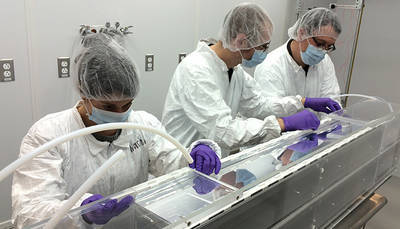
Yale’s Wright Lab will test new theory to solve a subatomic mystery
"A new study from the international Daya Bay neutrino experiment in China may have found an answer for why there appear to be fewer neutrinos from nuclear reactors than predicted in theoretical models. The next step will be for Yale’s Wright Lab — which has been involved in the Daya Bay research for a number of years — to confirm whether that answer is correct. Neutrinos are thought to be fundamental particles in the universe. They do not carry an electrical charge and move through the universe almost entirely unaffected by natural forces. For years, scientists have devised elaborate experiments to detect the subatomic particles and better understand their behavior. Yale scientists were involved in the experiments that led to the discovery of neutrino oscillation. Yet since 2011, physicists have been faced with an anomaly: Experiments at nuclear reactors showed fewer antineutrinos (the antiparticles of neutrinos) being produced than models had predicted. One theory to explain the discrepancy was that neutrinos were morphing into an undetectable form known as “sterile” neutrinos. The new Daya Bay study proposes a simpler explanation: a miscalculation in the predicted rate of antineutrino production for one particular component of reactor fuel. During nuclear fission, antineutrinos carry away about 5% of the energy released as the uranium and plutonium atoms — which fuel the reactor — split. The composition of the fuel changes as the reactor operates, with the decays of different forms of uranium and plutonium (called isotopes) producing different numbers of antineutrinos with different energy ranges over time, even as the reactor steadily produces electrical power. The Daya Bay scientists found that antineutrinos produced by nuclear reactions from the fission of uranium-235 were inconsistent with predictions. Uranium-235 is an isotope that is common in nuclear fuel." [...]
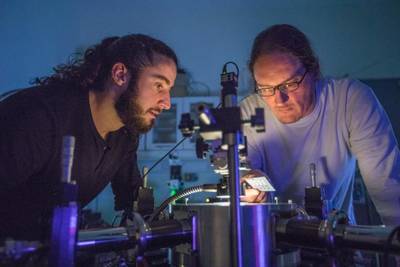
AMBER Researchers make major breakthrough in smart printed electronics
"Researchers in AMBER, the Science Foundation Ireland-funded materials science research centre hosted in Trinity College Dublin, have fabricated printed transistors consisting entirely of 2-dimensional nanomaterials for the first time. These 2D materials combine exciting electronic properties with the potential for low-cost production. This breakthrough could unlock the potential for applications such as food packaging that displays a digital countdown to warn you of spoiling, wine labels that alert you when your white wine is at its optimum temperature, or even a window pane that shows the day’s forecast. The AMBER team’s findings have been published today in the leading journal Science*. This discovery opens the path for industry, such as ICT and pharmaceutical, to cheaply print a host of electronic devices from solar cells to LEDs with applications from interactive smart food and drug labels to next-generation banknote security and e-passports." [...]

Microprocessors based on a layer of just three atoms
"Two-dimensional materials, or 2D materials for short, are extremely versatile, although – or often more precisely because – they are made up of just one or a few layers of atoms. Graphene is the best-known 2D material. Molybdenum disulphide (a layer consisting of molybdenum and sulphur atoms that is three-atoms thick) also falls in this category, although, unlike graphene, it has semiconductor properties. With his team, Dr Thomas Mueller from the Photonics Institute at TU Wien is conducting research into 2D materials, viewing them as a promising alternative for the future production of microprocessors and other integrated circuits. Microprocessors are an indispensable and ubiquitous component in the modern world. Without their continued development, many of the things we take for granted these days, such as computers, mobile phones and the internet, would not be possible at all. However, while silicon has always been used in the production of microprocessors, it is now slowly but surely approaching its physical limits. 2D materials, including molybdenum disulphide, are showing promise as potential replacements. Although research into individual transistors – the most basic components of every digital circuit – made of 2D materials has been under way since graphene was first discovered back in 2004, success in creating more complex structures has been very limited. To date, it has only been possible to produce individual digital components using a few transistors. In order to achieve a microprocessor that operates independently, however, much more complex circuits are required which, in addition also need to interact flawlessly." [...]

The Dark Secret at the Heart of AI
"Last year, a strange self-driving car was released onto the quiet roads of Monmouth County, New Jersey. The experimental vehicle, developed by researchers at the chip maker Nvidia, didn’t look different from other autonomous cars, but it was unlike anything demonstrated by Google, Tesla, or General Motors, and it showed the rising power of artificial intelligence. The car didn’t follow a single instruction provided by an engineer or programmer. Instead, it relied entirely on an algorithm that had taught itself to drive by watching a human do it. Getting a car to drive this way was an impressive feat. But it’s also a bit unsettling, since it isn’t completely clear how the car makes its decisions. Information from the vehicle’s sensors goes straight into a huge network of artificial neurons that process the data and then deliver the commands required to operate the steering wheel, the brakes, and other systems. The result seems to match the responses you’d expect from a human driver. But what if one day it did something unexpected—crashed into a tree, or sat at a green light? As things stand now, it might be difficult to find out why. The system is so complicated that even the engineers who designed it may struggle to isolate the reason for any single action. And you can’t ask it: there is no obvious way to design such a system so that it could always explain why it did what it did." [...]
Modelos 3D
Com a disponibilidade de ferramentas que permitem dar azo a nossa imaginação na criação de peças 3D e espaços como o thingiverse para as publicar, esta rubrica apresenta alguns modelos selecionados que poderão ser úteis.
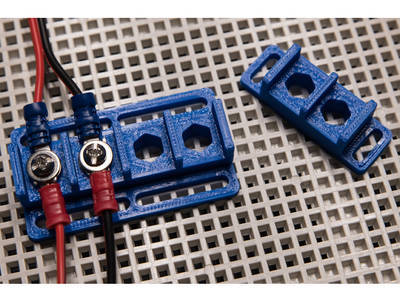
Wire Terminal/Connector Block/Strip
"Update: 3 new layouts uploaded, and these have a 1.5mm "backing" under the nut to reduce likelihood of short-circuit accidents as mentioned in the description below. Here's our "collection" (we'll add to it as we make more) of quick-printing, simple, ridiculously useful terminal blocks. Press-fit the nut and away you go. Certainly best for low voltage applications, (not "rated" for ANYTHING: you print and use this at your own risk and trusting your own knowledge of electricity and electronics). There's no base below the nut, which means that you probably should NOT use this on a steel/aluminum/conductive base / substrate / mounting plate of any kind, unless you're looking to burn some stuff with electricity and possibly even hurt yourself. Sized and designed for #6-32 hardware, the screw should best be 3/8" long to avoid reaching the base plate and marring it or worse, causing a short circuit (if both screws reach). Use a longer screw at your peril, though it can be useful in certain situations (perhaps you want to stack a bunch of connectors, for example). The screw-down slots are sized for #6 sheetmetal screws, and are spaced at 0.5CM intervals, to conveniently match up with the BUD Industries backplates we use so often (in the photos). We use a ton of these things while building various remote monitoring systems for our customers - learn more at Valarm." [...]

Cable clamp OpenSCAD parametric
"Made this for a friend. Simple design, almost everything is resizeable to fill your needs." [...]
Documentação
A documentação é parte essencial do processo de aprendizagem e a Internet além de artigos interessantes de explorar também tem alguma documentação em formato PDF interessante de ler. Todos os links aqui apresentados são para conteúdo disponibilizado livremente pelo editor do livro.

newelectronics 11 Abril 2017
"New Electronics is a fortnightly magazine focusing on technological innovation, news and the latest developments in the electronics sector. Downloadable as a digital page turner or pdf file, or offered as a hard copy, the New Electronics magazine is available in a format to suit you." [...]
Projetos Maker
Diversos Projetos interessantes.
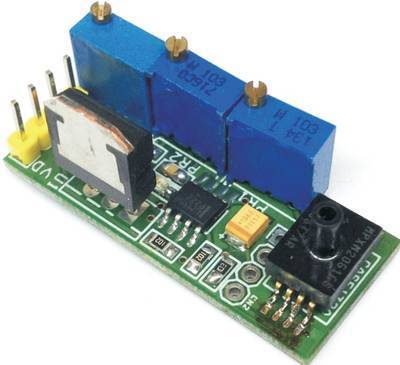
Simple Pressure Sensor Amplifier & Over Pressure Switch
"The pressure sensor amplifier built using LM358 op-amp and MPXM2051GS pressure sensor from NXP semiconductor. The circuit provides 4V output for full scale pressure input 0-7.5PSI. One op-amp is used as amplifier and 2nd op-amp is used as comparator to provide an output at set value that can be used as over pressure switch to control a pump or solenoid. This is a low cost general-purpose circuit for those applications where +/-3% performance is acceptable. Multi turn potentiometers are provided for Offset, span adjust & over/under Pressure set point to control output devices like solid state relay, Pump, and solenoid." [...]
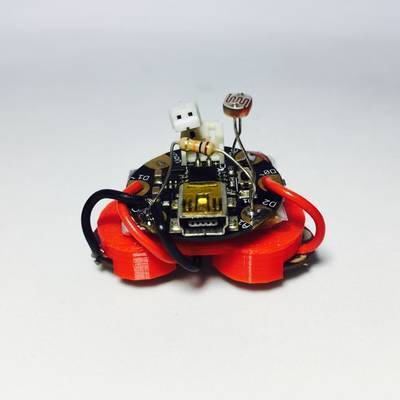
Mini Robot (con Adafruit Gemma)
"In this instructable I build a small robot that serves to experience algorithms movements. Show particular details of construction, but did not elaborate on aspects of movement or algorithms follow the light, that I leave to you. My recommendation is, once built the mini robot, explore multiple way of trying to follow the light (phototaxis)" [...]

Use a TI LaunchPad to Activate a Fan or Just About Anything!
"This LaunchPad-based Crop Duster Buster is sure to keep your pet’s farts away! Or at least you’ll learn something about automating devices to be controlled by clapping. Don’t you hate when you’re sitting with a loved one and they let one rip without warning? You probably can’t train your dog to hold it, but you can create a device that will help supply fresh air to your personal space with the clap of a hand! (Okay, so two claps with two hands, but you get the idea!)" [...]

Arduino MuziekDoos
"For a school project I created this music. It's a really simple project that even a beginner like me can make. You only need an Arduino starter kit. To make it more fun, I met four red buttons themselves at an electronics store nearby. Also, I pick up a "toggle switch" because you thus easily your whole circuit on and off can turn without prescribing separate code. The wooden box around I made myself with some wood that I had at home." [...]

Portable Raspberry Pi Zero W
"This project was driven by my desire to utilize the newest features offered by the Raspberry Pi Zero Wireless. I travel a lot, so I wanted a small, portable Raspberry Pi system. I have RetroPi loaded onto it, but it could be as versatile as you need it to be." [...]
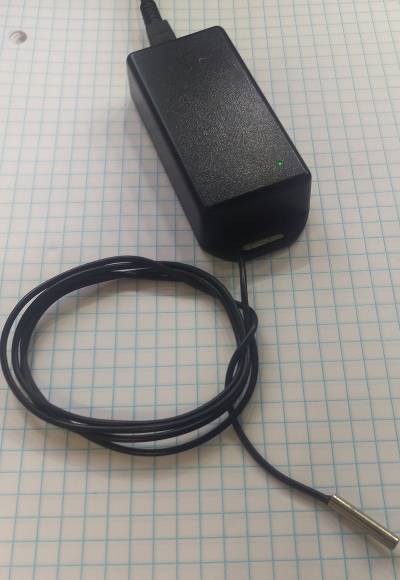
ioTank
"IoT (internet of things) environment monitor based on Esp8266 (NodeMCU), Arduino, Jquery, Django REST, Fritzing, the third industrial revolution, and the Hammond 1551k project box. Designed in Colorado by Object Syndicate. ioTank captures real time (every 300ms) sensor readings for temperature, humidity, and light. It plots them on an animated graph which can be read on any HTML5/JavaScript compatible browser (so any smart phone and all modern PCs/macs). This is done by visiting its IP address in the browser. It does this with its own on-board WiFi micro-controller. Since it is WiFi enabled it will connect to a router or a device using Internet sharing. You do need a PC/Mac (soon android) to set the device's WiFi SSID/password. Once the SSID/pass is set up it will operate autonomously and will connect to the access point and act like any other WiFi device. IoTank is designed to store it's info every 5 minutes within internal flash memory for 3 days and send it to the cloud for long term storage and big data processing. We currently provide 1 SaaS for cloud storage, Herpien.com which is geared for reptile owners. We will be releasing a generic cloud storage product for ioTank soon. You are also free to build your own using Django REST or other web languages." [...]

Falling-Up Robot with Stepper Motors
"I'm developing the Falling-Up Robot (F.U.R.), a very tall balancing inverted pendulum bot, using the Teensy 3.6 microcontroller with the Arduino IDE 1.6.12. I want to learn feedback control systems through practice on an inherently unstable system. It's 6 feet tall to stand with you and so I can tinker with the main board at desk level. So far, the brain and chassis is in place, and the basic balancing control system is active to keep it from falling over. I used stepper motors to take advantage of high torque at low RPM and zero backlash. This allows very steady stand-still performance. But dealing with the stepper-induced mechanical vibration was an issue. This was mostly solved with analog filters on the IMU and with an Extended Kalman Filter in software." [...]
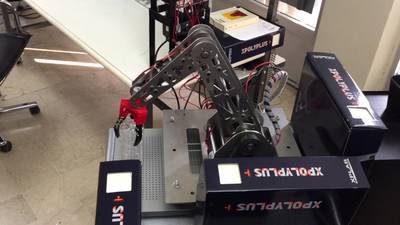
End-Effector and Control Logic for Robot
"In this project, I developed an easily implementable and economic control system for the management of electric drivings. This system shall apply to an pre-existing robot endowed with three axes. In addiction, for this robot I have added an axis and designed a flexible gripper that is adaptable to a different workpiece’s shapes." [...]

BIGLID - Big LED Interactive Display
"The Big LED Interactive Display is a interactive real time LED Matrix display equipped with a Microsoft Kinect Sensor." [...]

Desk Weather Station
"I've build a Desk Weather Station by using Arduino, DHT11, DS3231 and BMP280 sensors. The Arduino is collecting data from Sensors and the data is displayed on the LCD. The menu for displaying and setting Date&Time is controlled by four push buttons. You could repeat this instructable or use it as part for an other project." [...]
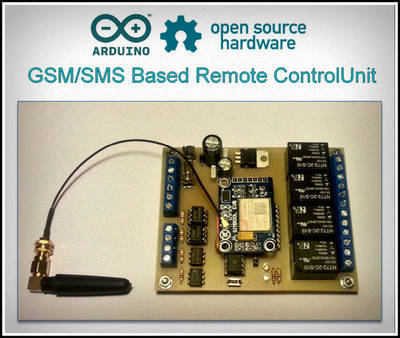
Arduino Based GSM/SMS Remote Control Unit
"With such a wide range of GSM modules available for the hobbyist, most of us ended buying one. I purchased a SIM800L module locally, and ended up playing with the different commands of the module. Using the Arduino Uno and the Arduino IDE, I was able to turn my ideas into reality. This did not come easy, with the SINGLE BIGGEST ISSUE being the limitation of only 2KB SRAM. After a lot of research on the internet and different forums, I was able to overcome this limitation. Different programming techniques, a much better understanding of the Arduino compiler, and using the SIM card and EEPROM for additional memory, saved this project. After some changes to the code, a stable prototype was build and tested over a period of a week. A drawback of the limited SRAM was that the unit could not be fitted with a display and user keys. This resulted in a complete rewrite of the code. With no user interface, the only option left to continue with the project, was to make use of SMS messages to configure the unit, as well as the users. This turned out to be an exciting project, and more futures were added as the development continued. My main goal was to stick with the Arduino Uno, or in this case, the ATMEGA328p, and not use any surface mount components. This will make is easier for the general public to copy and build the unit." [...]
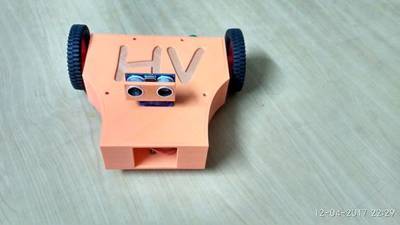
Fully 3D Printed Arduino Robot
"So coming to the project , I was always fascinated by robotics. How they can move and obey the instructions and can do various stuffs. So I chose Robotics as my hobby. This Project Is based on arduino ,Bluetooth Module, HC-SR04, and others This is Fully 3D printed and assembled robot that can be controlled through your smartphone or autonomously through the sensor. I will walk around various tip and methods how i did this project." [...]

Simple Humanoid Walking and Dancing Robot
"This instructable will be about making a humanoid walking robot that uses Arduino and can walk, jump and do some dances. The thing that is different in this robot compared to other humanoid robots is that while others use several high torque (expensive) servos, this robot only uses 2 (micro) servos per leg. This makes the robot easy to create, code and also cheap to make. This robot can be made as a beginners robot to introduce yourself to the field of robotics. Let's get into making the robot!!" [...]

Micro Controlled Firework Rocket Launcher
"Nowadays so many people, specially children just enjoy with the fire works carelessly so, I decided to create safety rocket launcher to minimize those damages instead of suggesting them Here I am showing how to make a cheap Arduino bluetooth Firework Rocket Launcher It's simple to make and so easy to program. A unique design make it different from that of other Arduino bluetooth launchers. Hope you like this idea and after this instructable, you can upgrade and change the features or anything else!" [...]
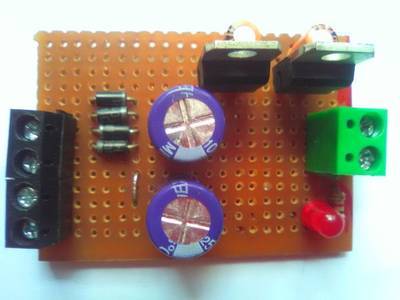
+5V and -5V Dual Regulated Power Supply
"Dual regulated power supply is needed in many digital and analog circuits.Operational Amplifier like UA741 needed dual regulated power supply to operate.In normal regulated power supply,only positive voltage is regulated this leads to ground loop coupling which produces noise when powering circuits like FM transmitters using IC555. That's why FM transmitter circuits are always powered using battery to eliminate noise.In digital circuits dual regulated power supply is used for safer operation of Analog To Digital Conversion without any error." [...]
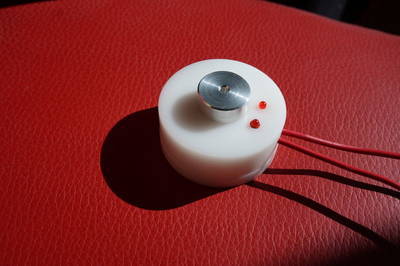
Safe Capacitor Discharge Tool
"Discharging capacitors is often necessary when working on troubleshooting and repair of electronic equipment. In the old days, tube radios and amplifiers found in every households contained capacitors that continued to hold dangerous levels of charge long after the appliance had been taken off the mains. Then it was CRT televisions, but now that televisions are LED flat screen it looks like everything has turned to low-voltage digital circuitry, so what is the problem? Well, the actual devices may be low-voltage, but the associated power supplies just got from dangerous (tube era B+ supplies) to (relatively) safe (transistorized equipment with linear power supplies) to dangerous again. The culprit today is the switched mode power supply, the efficient and lightweight modern king of power conversion for electronic equipment. A switched mode power supply is based on an input stage that rectifies the mains voltage, yielding a direct voltage of around 330 V (for 230 V mains voltage, 170 V for 120 V mains voltage) for further use by the circuit. Turns out these little nice black boxes that hang from our laptops and are built into practically everything electronic around us that is not running on battery have really some lethal voltages inside." [...]
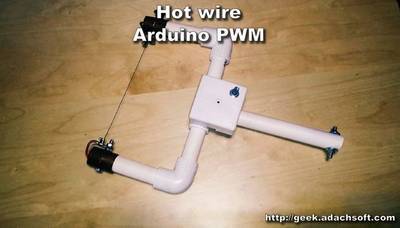
Hot Wire Foam Cutter - Arduino PWM
"Last time I did the Hot wire foam cutter but I missed the temperature control. So that's why I made a simple PWM control. The whole project was based on Arduino ATtiny85 Digispark. For this project I only needed three pins, so the ATtiny85 is fine. Also I carried the wires in the PVC pipes." [...]
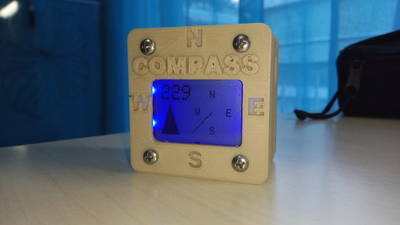
Arduino 3D Printed Compass
"In this Instructables guide I will show you how to make your own Arduino based digital magnetic compass. In this guide you will also find the .stl files of the 3d printed case/box." [...]
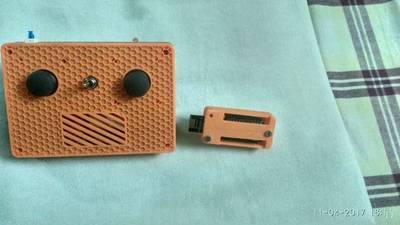
Arduino and NRF24L01+ based RF transmitter and receiver
"So coming back to the project. As i was into robotics for a long time. i always wanted have a wireless remote control system through which i could communicate with the robot. So i chose the components which are quite common and have a trusted name such as arduino and nrf24l01+ modules. And this project is all about how i made this system and how i found the solutions to the common problems. This is not an another remote control system ,but a highly integrated and explanatory system which will help you to understand about the things.So guys bear with me for this long and detailed instructable." [...]

Encoded Audio With Radial Basis Function
"The main goal of the project is to achieve a system which codes sound signals using Radial Basis Function embedded on a Zybo FPGA board. After the coding process the RBF weights are to be transferred through a Pmod RF2 to a similar system, which ensures the decoding of the message, which then can be played back. The code is intended to be very secure and extremely hard to decipher. Another goal is to minimize the error and quality decrease between the originally recorded audio signal and played back audio signal." [...]
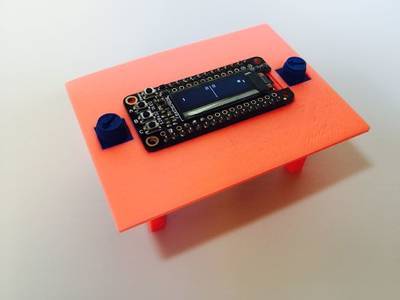
Mini Retro Pong Game
"In 1972, Atari developed Pong! From a similar game of Magnavox, improved the idea of a Ping Pong game, and included it in an Arcade format. At that time, the game was difficult to build, and was not programmed as such (there were no microprocessors), but consisted of a series of chips, a work that only experts in the field could develop. Today, thanks to microcontrollers, we can make the game, without wasting much time on hardware, and concentrating on programming. In this instructable, I play a Pong game using an Adafruit Feather M0, with an OLED (Featherwing). Here I detail the construction, but also explain how to plan and develop the code, and leave with a couple of challenges at the end." [...]
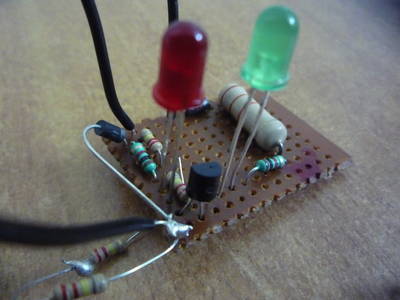
Cardboard Enclosed Earth Fault Indicator
"Here is a simple tester to find whether the mains wiring is Correct or not. This tester can be used to check sockets periodically before connecting appliances like heater and electric iron. It indicates the status of the mains wiring through two LEDs as shown in image." [...]
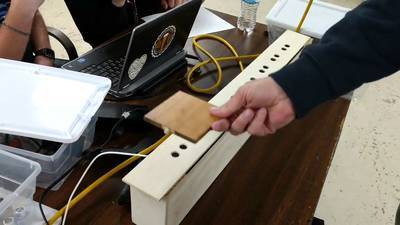
Ultrasonic Pi Piano With Gesture Controls
"This project uses inexpensive HC-SR04 ultrasonic sensors as inputs and generates MIDI notes that can be played through a synthesizer on the Raspberry Pi for a high quality sound. The project also uses a basic form of gesture control, where the musical instrument can be changed by holding your hands over the two outermost sensors for a few seconds. Another gesture can be used to shut down the Raspberry Pi once you are finished." [...]

Arduino Alarm Clock
"i all, In this instructable, I'm gonna show you how to make a Alarm Clock using Arduino Board. I have used Arduino UNO, 16x2 Character LCD, DS1307 RTC Module, 3x push buttons, 5V Buzzer, Breadboard and Jumper Wires to build this clock. you can see the date, and time on the display and able to set date, time and alarm. The buzzer rings the alarm when current time equals to pre set alarm time. you also able to turn off the alarm and use this as a normal clock. not only them, but also you can set the alarm ringing time and alarm pattern. when the alarm rings, you also able to stop it. All right, Lets move to the part list which we need to build this." [...]

Arduino and Visuino: Long Distance Remote Light Sensor With RFM95W/RFM98W Makerfabs LoRa Shields
"There are many wireless communication options when connecting Arduino boards. One of the most popular ones is the Wi-Fi. It works well at small distances, and around Wi-Fi hotspots, however when the modules need to connect over long distance at areas where Internet is not present, Wi-Fi is not an option. Luckily there is a great and easily available alternative - the LoRa (Long Range Wide-area network) modules allow sending small packets of data between modules over very long distances (5 Km or more) . Visuino has support for a number of LoRa Modules, and I was planning tutorial for quite some time, since I had some Adafruit LoRa modules. However, recently the great people at Makerfabs, sent me 2 RFM95W 868MHz based LoRa Shields, and even a great Arduino UNO compatible Maduino UNO board. The Makerfabs modules are of exceptionally good quality, and I decided to make this tutorial with them. In this tutorial I will show you how easy it is to install the LoRa shields on 2 Arduino UNO boards, and program them with Visuino to transmit data over long distance." [...]
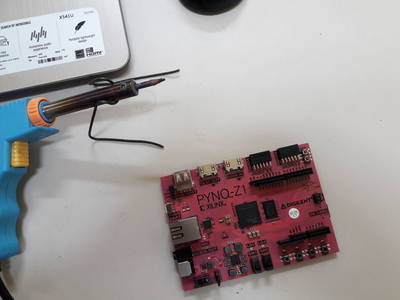
Activity Monitor
"In this project we intend to collect data from a person performing certain activities, such as: running, bending, walking, climbing stairs, squats, jogging etc. For data collection we use two modules, one for the hand and the second for leg, which are connected via Bluetooth to a central module that will send data using a WIFI connection to a database, following that there will be processed and compared with the aim of long term observation of a person activities." [...]

DIY Simple Circuit Continuity Tester
"So, you don't have a multimeter? You can make this continuity tester at home. Circuit continuity tester is a device that indicate current can flow in electronic circuit. This equipment can detect whether there is a break in wire or components." [...]

DIY Arduino Soldering Station
"In this project I will show you how to create an Arduino based soldering station for a standard JBC soldering iron. During the build I will talk about thermocouples, AC power control and zero point detection. Let's get started!" [...]
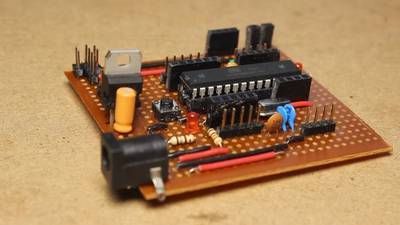
How to Make Your Own ARDUINO UNO Board ( Breadboard - Veroboard - Programming )
"Hello guyz, Welcome to Being Engineers. Hope you all are doing good. In this tutorial we will learn how to make your own Arduino Uno. We will gather the components, test the circuit in breadboard, then we will make the board itself. When it is done we will know how to program the Arduino IC AKA Atmega328p on board. So it is going to be a long tutorial.It will take some time to go through all the steps one by one. So be patient with your work. At the end you will have your own homemade Arduino Uno. " [...]

Bright Ball IOT
"This project is based on the control, via the app Blynk, a matrix of neopixel, since a simple lamp was not enough I added a watch and a temperature and humidity sensor, but we see in detail." [...]

Robotic motion controller
"The Five-Axis Robotic Motion Controller aims to bring physical input and output closer together through the design purpose-built tools for fabrication, which hopefully leads to many new creative opportunities for designers. Working from observations about the way architects design, this project explores the development of a novel 3D drawing tool or customized 5-axis digitizing arm that takes real-time input and translates movement patterns directly into machine code for robotic fabrication. An improved workflow for robotic simulation was also developed as part of this project; using design tools that are already familiar to architects and designers, such as Rhino and Grasshopper. The existing design-to-fabrication workflow for industrial robots (left) has traditionally been a slow and cumber-some process, especially for designers. Machine tooling, kinematic simulations, and robotic movement programming often require intimate knowledge of scripting and manufacturing processes, all of which limit the utilization of such tools by the 'typical' architect/designer. " [...]
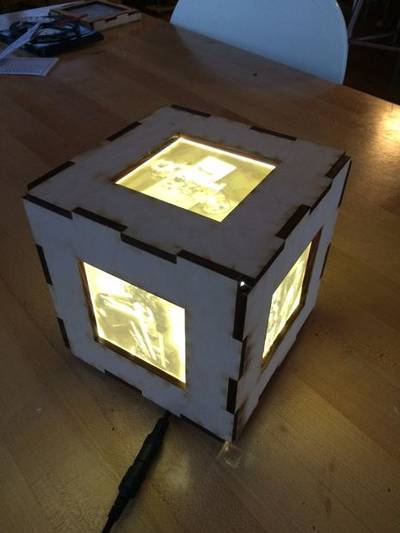
Lithophane Cube
"Design and create a beautiful, personalized photo lantern. Each photo is 3D printed and the frame is assembled and lined with LEDs. This makes a fantastic gift for a friend or family member, or a wonderful decoration for your own home." [...]
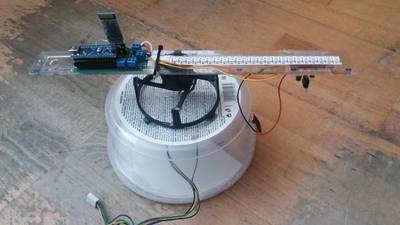
DIY Persistence of Vision Game Display
"Are you bored of your regular displays? Have you got a innovative idea for a game? Have you got a soldering station or somebody to help you with one? Well you are in luck, because with this instructable you will know the basics of the Basys. More precisely this tutorial shall provide a general idea on how you can build your very own POV, that's Persistence Of Vision, and game in VHDL." [...]

Indoor Air Quality With Hornbill ESP32
"Have you ever wondered about the quality of Air you breath? What affects the air quality? Can you measure it and prevent it from degrading. In this tutorial we will look at measuring the following parameters that determine the quality of Indoor Air" [...]

Pi Time- A Fabric Arduino Clock
"This clock started it’s life as a quilted Pi design, from Pale Gray Labs. I wanted to incorporate lights into it because it’s so gorgeous, but I also wanted it to be useful. I decided to turn it into a clock that hangs on my wall! I started out with several smart RGB LEDs, also known as neopixels. Neopixels are individually addressable. Originally I had hoped to use sewable neopixels, but those are expensive, and sewing them would take much longer than soldering. The neopixels are hot glued onto the back of the clock." [...]
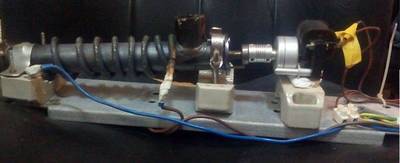
3d Filament Extruder
"Instead of buying filament produced from plastic pellets. Why not use your own plastic waste and produce filament much cheaper and eco-friendly? It’s environmental project that will help sustain plastic problem. Plastic shreds are inserted through hopper. the heater starts to heat the room when heater reaches 100C, the screw will push melting plastic to the nozzle. nozzle will extrude plastic 2 mm in diameter" [...]
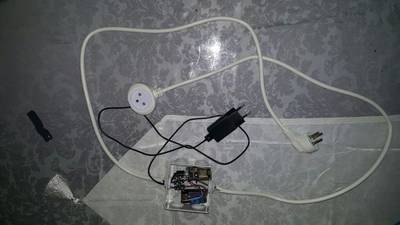
NodeMCU - Smart Home Switch
"This guide purpose is to show how you could control any remote switch remotely over the internet without maintenance any static IP address. This guide is not required any previous knowledge, but basic code knowledge is recommended. Before starting read this article, I want to clarify that the writer of this article is not take any responsible of outcome using this guide, If you are using a high voltage it is in your own risk! you can look at the pictures and movie above to see the final result." [...]
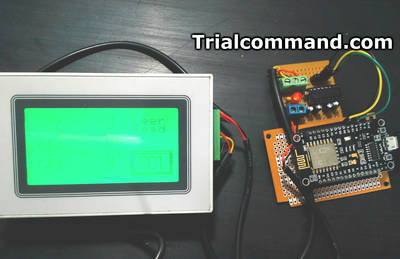
Gateway: ESP8266 Modbus RTU MQTT + HMI Industrial Panasonic
"Given the growth of IoT applications using the MQTT protocol as a base and the Node-RED platform, we have created a possibility for industrial devices or devices using Modbus RTU protocol (RS232 or RS485) to interact with applications or IoT platforms that use MQTT in This Node-RED case. In the industry there is a large number of Monitoring and Control Devices that have Modbus RTU such as Counters, Meters (Flow, Electrical, Temperature, Humidity, etc.), Industrial Controllers PLC, PAC, HMI Screens, Speed Inverters, For which the only possibility of extracting and concentrating data through OPC servers." [...]
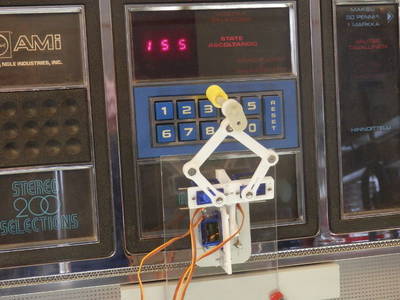
PlotClock, WeMos and Blynk Playing Vintage AMI Jukebox
"Four technical innovations made this project possible: The 1977 Rowe AMI Jukebox, PlotClock robot arm kit, WeMos/ESP 8266 microcontroller and Blynk App/Cloud service. NOTE: If you don’t have the Jukebox at hand – don’t stop reading! This project can easily be adopted to control various things controlled by human fingers. One example could be a robot finger playing traditional Xylophone – maybe that instructable comes from you! My 40 years old Rowe AMI R-81 Jukebox is still working fine playing vintage vinyl singles from 60’s, 70’ and 80’s. Weighting over 160 kg (360 lbs) this player is not quite as portable as modern mp-players, but living at internet era, it is now possible to carry the jukebox and 200 vinyl records in your pocket – virtually of course! And you can even use your own playlists stored in the microcontroller! Amazing PlotClock robot is originally designed to show current time by drawing time digits on the erasable board. My adaptation for PlotClock is to use it as a robot finger for pressing Jukebox song selection buttons. The Plotclock ”finger” is driven by 3 servos controlled by WeMos microcontroller. This piece of wonder is (almost) Arduino Uno compatible and has WiFi capabilities, so it is possible to control the jukebox wirelessly from anywhere in the world. The cream on the cake comes from the incredible easy to use Blynk App and their Blynk Cloud Server giving a nice mobile phone/tablet user interface with full mobility." [...]
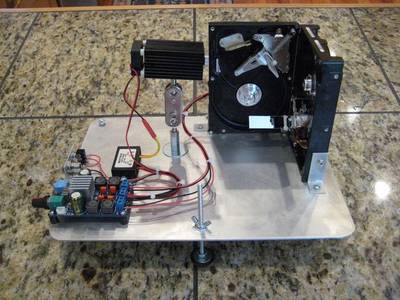
Music Laser Light Show
"I have been mirroring two 1TB hard drives in my PC as a media share for the past several years but my BIOS recently started giving me a S.M.A.R.T. error every time I booted warning me that one of my drives was about to fail. I could have just replaced the faulty drive but decided instead to upgrade to two new 3TB drives and use the old drives as galvanometers for a music-responsive laser projector. Back in the 90's I came across a device in a music store that was enclosed in a plastic case about half the height of a shoebox that had a mirror connected to a voice coil with a lamp behind a red filter and lens that focused the beam on the mirror so that it produced a red dot that would move to the beat of the music. It wasn't a laser but it worked really well. I don't know what happened to it and can't find it referenced anywhere on the Internet but I decided to recreate it. I searched the Internet and found several DIY laser projection systems. This one uses old hard drives and a red laser and this one uses hard drives and an Arduino controller to change the color of an RGB laser. I decided to use just a red laser and leave the components exposed." [...]

8 Player Quizz Buzzer System Using Arduino
"8 player quiz buzzer can be used in various competition organise in school and colleges to identify the team who has pressed the buzzer first. Advantage of this quiz buzzer circuit is once a team has press the switch others team may press the switch but only number. displayed on display who press switch first. So with the help of this circuit we can easily identify the contestant who has press the switch first. Let build the circuit using a ARDUINO NANO which read the input from push buttons and displays the corresponding number on a display device. It is a simple circuit with minimum number of components and easily can build. The ARDUINO takes into account the time delay between two buttons and the accurate number is displayed. When one of the buttons is pressed, the buzzer starts ringing and the corresponding number is displayed on the 7 segment display." [...]
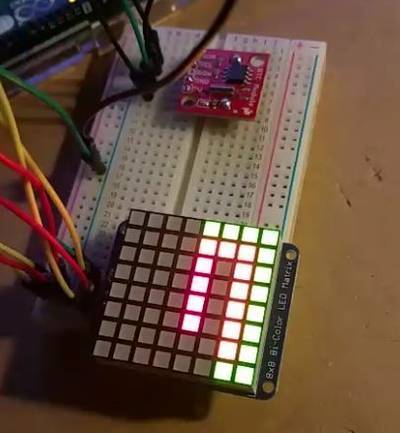
Arduino Matrix Clock
"So, a little introduction as to why I made this project. For school we needed to make an interactive arduino project and because I'm not the best programmer in the world so I've chosen to make an interactive matrix clock." [...]
That's all Folks!


